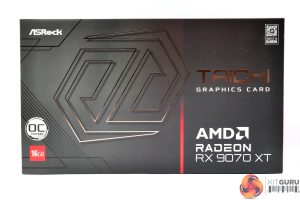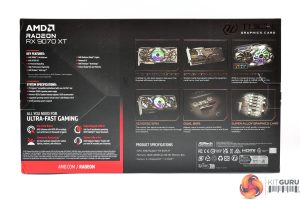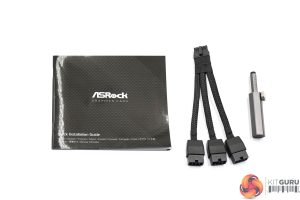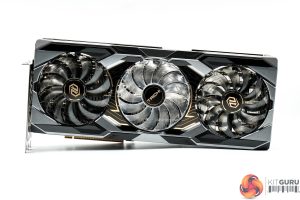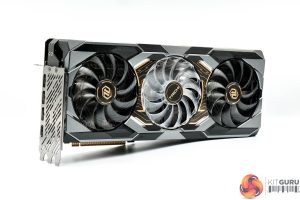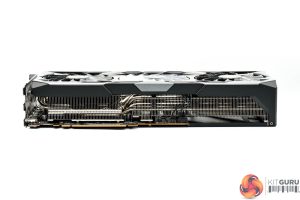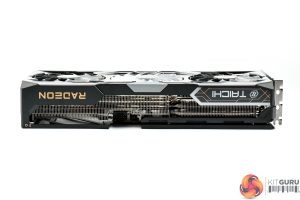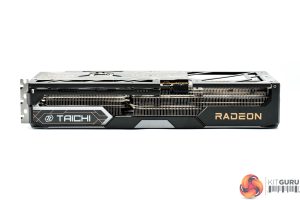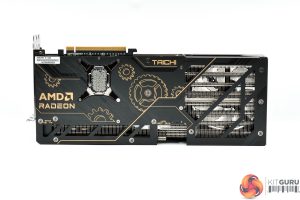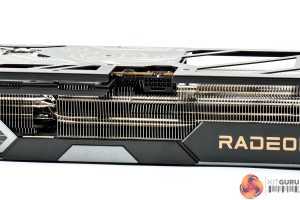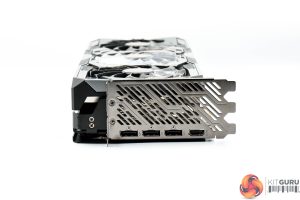The ASRock RX 9070 XT Taichi ships in a dark box, with only the Taichi and AMD logos on the front. On the back, ASRock highlights various key features of the graphics card itself.
Inside, we find a quick start guide, triple 8-pin power adapter, alongside a small GPU support accessory.
The card itself is rather eye[catching with its design – it may not be for everyone, but the combination of the black and grey shroud, along with the gold accents, makes for something a bit different to what we usually see! ASRock has deployed a triple-fan cooler too, with each fan measuring 100mm in diameter. You will also notice that the central fan spins in reverse, relative to the outer two, which, according to ASRock, helps to ‘lower turbulence and enhance air dispersion through the heatsink.'
By modern standards, the Taichi isn't ridiculously large, but it's still on the bigger side, measuring 330 x 140 x 61mm.
The front side of the card is home to the Taichi and Radeon logos – the former lights up as an RGB zone once powered on.
As for the backplate, I really like what ASRock has done here – it's a full-length metal design, but the gold cog accents compliment the overall aesthetic very well. We can also see a large flow-through area to allow air to pass directly through the heatsink.
ASRock also provided a BIOS switch near the I/O bracket, giving users a choice of the Performance or Quiet modes.
Here we get a look at the RGB lighting, too. ASRock has even included a hardware toggle to turn the LEDs on or off, so no need for software, which some will appreciate. An on-board ARGB header also allows users to control the RGB lighting via the motherboard.
Interestingly, ASRock has opted for a 12V-2X6 connection for power, instead of the usual 8-pin connectors we see on AMD GPUs.
Video outputs consist of 2x HDMI 2.1 and 2x DisplayPort 2.1, though the latter are UHBR13.5 bandwidth, not the full UHBR20 spec.
 KitGuru KitGuru.net – Tech News | Hardware News | Hardware Reviews | IOS | Mobile | Gaming | Graphics Cards
KitGuru KitGuru.net – Tech News | Hardware News | Hardware Reviews | IOS | Mobile | Gaming | Graphics Cards


